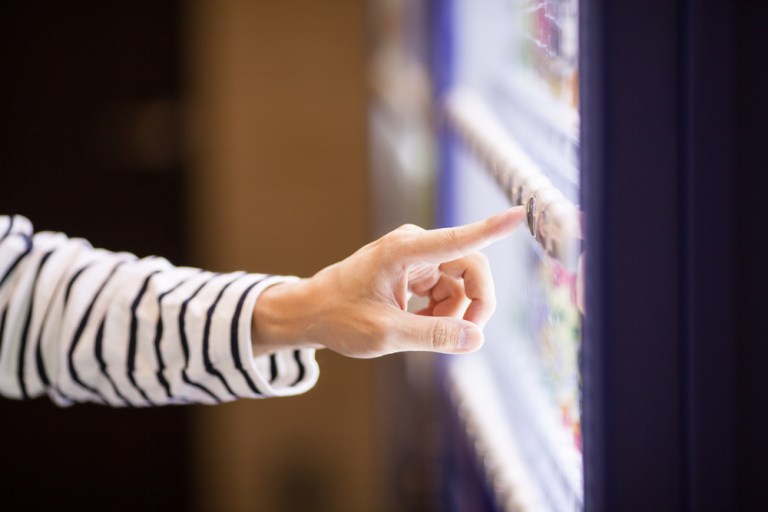
Remember when the dollar bill slot was the biggest advance to hit vending machines? Donna Trego, CEO of 63-year-old Coastal Canteen, says that was then, but this is now when it’s cashless all day, every day. That, Trego says, drives both consumer choice and higher average tickets.
There’s no doubt that technology has helped the vending industry to come a long way.
Whether consumers are purchasing a car from a vending machine or getting a hot meal from a pizza ATM, the unattended retail space is advancing at lightning speed.
But one of the most interesting changes is the boost to consumer choice that has happened as a result of more payment options when it comes to vending.
Donna Trego, owner of Coastal Canteen Vending and Food Service, has a had a front row seat to the transformation. As she pointed out to Karen Webster, when her father started the company back in 1953, only coins were accepted and buying a package of peanuts only cost the consumer $0.05.
Today, that $0.05 price point looks more like $1.25–$1.50 for most products.
Though product prices have changed, new technologies have been introduced, and the cost of equipment has increased. Trego said one of the most notable changes across the industry over time has been payments.
“The payments options have officially arrived,” she said. “That’s the best part about being in the vending business in 2016.”
Along with the arrival of advanced payments, consumers have also been provided with the freedom to keep their preferences and choices top of mind.
Think of it like this: If a consumer is standing at a vending machine that only accepts cash and they only have $1 in their pocket, their only real choices are the products that cost $1 or less.
But when cashless payments are made available, that same consumer can lead with their product preference and allow the price of a product to be an afterthought.
“Consumers are way more conscious when they are standing in front of a vending machine having to find a dollar bill and a quarter versus standing there with their credit card,” Trego explained.
Not only does the freedom to make purchases with payment cards or mobile payments help expand what consumers can buy, it can also lead to them spending more money.
Without being limited to the cash they have on hand, the purchasing possibilities are greatly opened up.
Coastal Canteen is on a mission to ensure that 100 percent of its fleet of roughly 2,000 vending machines, located throughout the greater Charleston, SC area, is equipped with cashless payment options.
The company is working with USA Technologies (USAT) to make the expansion a reality.
Currently, approximately 400–500 of the company’s vending machines include cashless payment readers, which has resulted in about 32 percent of Coastal Canteen’s average machine sales coming from cashless usage.
Kanesa Hopkins, operations manager for Coastal Canteen, said that, with more consumers demanding healthier snack options, which typically have a higher price point, the increase in cashless payment options across the company’s machines will be a significant benefit.
“That’s where we’ve found it to be very beneficial to increase the variety of products and add those types of healthier, higher-priced items to the machines, because now customers can pay for it with a credit card,” Hopkins explained.
USAT and Coastal Canteen began the first phase of the cashless project in June, with the expectation that the majority of the machines will be enabled to accept cash, credit/debit cards and mobile wallet payments within a 90-day window.
The goal is for any remaining machines, which may require more extensive upgrades or changes to equipment, to be cashless-enabled by the end of the calendar year.
Though cashless payment acceptance is top of mind right now, both Trego and Hopkins had their own ideas about where new technologies and payment advancements will take the vending space next.
Trego is certain that the day will come when cash and coin payments in vending will finally be a thing of the past.
“As years progress, the dollar for vending machines will be absolutely obsolete,” she noted.
While there’s no clear indicator about if and when the heavily cash-reliant industry will transform into being cashless, it’s clear that payments will continue to influence the revolution of vending in many ways.